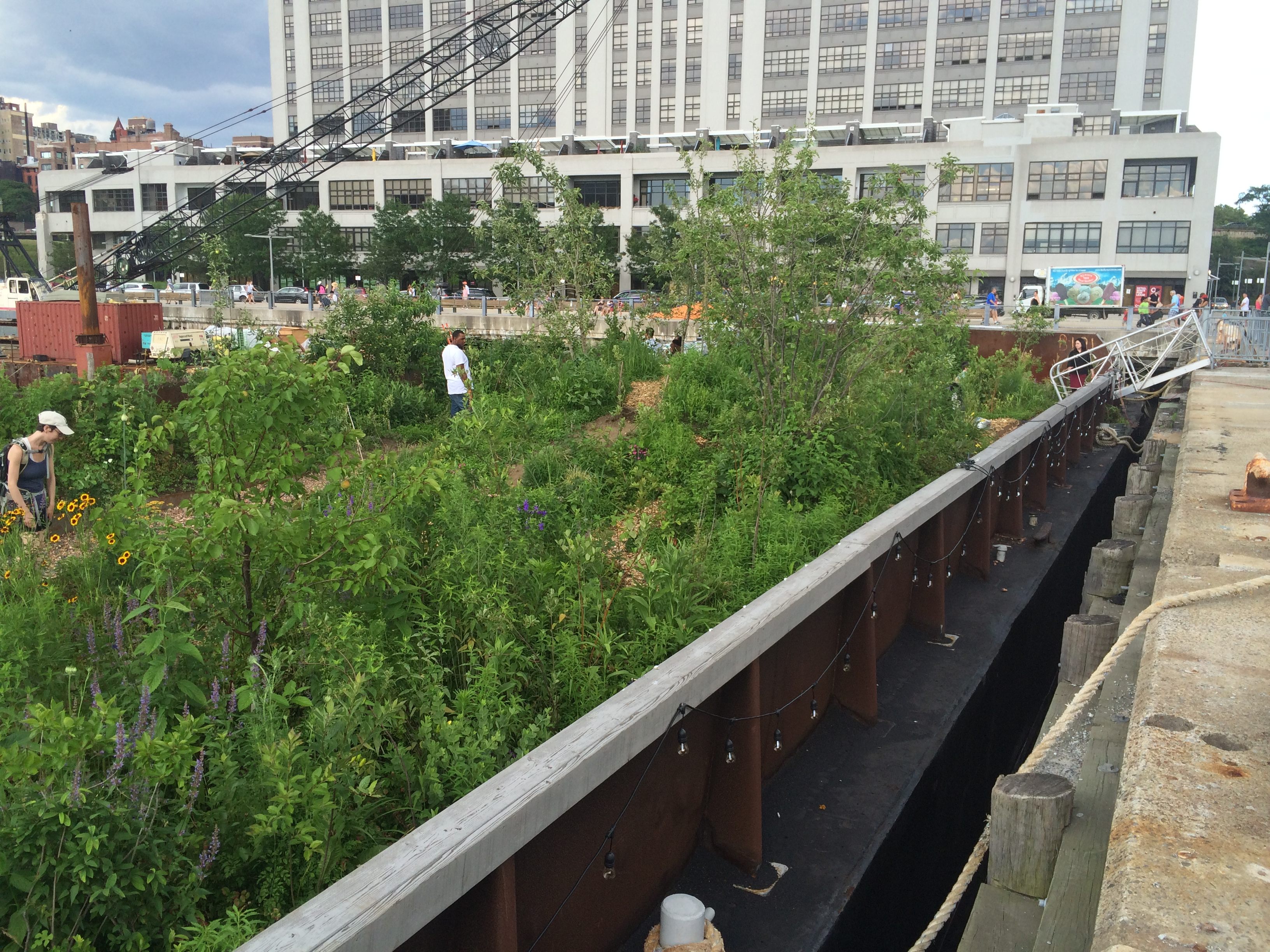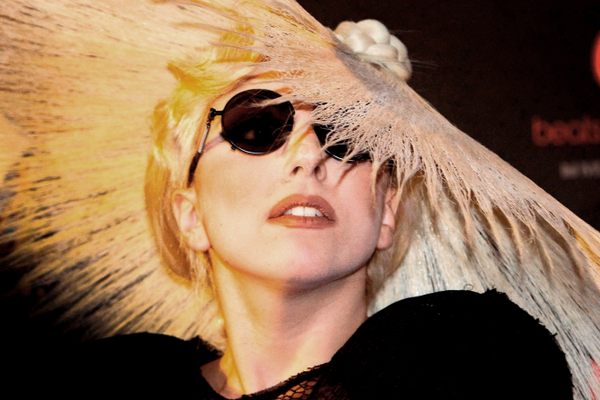This Floating Forest Is the Only Legal Place to Forage for Food in New York City
Make a salad while staying on the good side of the Parks Department.

New York may be a bustling metropolis, but the city also boasts roughly 30,000 acres of parkland full of lush greenery. But these parks have an important rule: Look but don’t dine. If a weed, such as mugwort, is edible, it’s against park rules to pick and eat it. Local foragers, who comb through foliage for edible and medicinal plants, have fought the rule for decades. Steve Brill has led foraging tours of Central Park since the 1980s, and was even arrested for foraging back in 1986. Despite the legal threat, he and others continue to lead tours, pick plants, and chow down in parks across the city. But now there’s a new—legal—source for edible greenery in New York. It also happens to be floating on the East River.
A barge that once carried sand to construction sites now carries Swale, a forest meant for foraging. Started by artist Mary Mattingly in 2016, Swale provides an aboveboard place for foragers—or anyone—to pick everything from onions to plums wherever it’s docked. Brooklyn Bridge Park’s Pier 6 is Swale’s current home, but it will move to the Bronx’s Concrete Plant Park on Friday, June 30.
From shore, Swale looks like an unassuming, rusty, industrial barge—with a few trees poking up over the sides. On board, the 40-by-130-foot barge is a lively place. In the corner sit white tanks used to filter and treat water from the East River for use on board. Gravel paths wind through the compact landscape, past a hill and lush planting beds, to a small shed and a patch of green lawn.
Swale isn’t a community garden, of the sort scattered all over the city, where locals can plant their own food, but rather a food forest, “specifically using permaculture techniques, not gardening techniques,” explains Amanda McDonald Crowley, an art curator and Swale’s community outreach specialist. Permaculture techniques, coupled with people harvesting plants that would normally take over, eliminate the need for pesticides or chemical fixes for soil deficiencies. Next to the blueberries, for example, are small conifer saplings that acidify the soil, which makes blueberry bushes happy.
Young fruit trees, including apples and beach plums, are scattered around the barge, while shrubs, greens, and vines make up the understory. The greenery is diverse, but there are some common favorites mixed in. “We’ve deliberately planted a lot of more conventional herbs and spices that people will recognize more immediately,” says Crowley. Familiar plants make Swale more accessible for people who aren’t experienced foragers. “Everyone knows basil and tomatoes,” notes Mattingly. But plenty of Swale’s foliage is only recognizable to the trained eye (and palate). “Different communities of people really know different plants,” she adds. Plants such as mint, mugwort, and kale are popular in some neighborhoods but not in others—it all depends on the local mix of cultures and cuisines, of which New York has many.

Almost everything on the barge is edible or medicinal, but whatever isn’t has some other purpose. The bark of the ash tree, for example, can be used to make cordage. Even the edible plants might have a secondary use, like the Hopi Red Dye Amaranth, which can be eaten and used to dye fabrics. “We’ve always got staff on board to help people think about what they should pick and point them in the right direction,” says Crowley, and small signs note the uses for each plant. Workshops are frequently held that give visitors a chance to get hands-on experience.
Guidance is one advantage Swale has over city parks—illicit foragers in parks are on their own when it comes to identifying and preparing plants, which might be contaminated with heavy metals that may lurk in urban park soil. Conditions are a bit more comfortable on the barge, too. “We are shielded a little bit by being on the water because the water’s more temperate,” says Mattingly. “It’s not quite as harsh in the winter on the water, and it’s cooler in the summer.”

Being on a barge does present some unique challenges. The Coast Guard’s approval process can be strict, and there are plenty of other permits to be secured wherever the barge is docked. It bobs up and down whenever a boat passes by, an effect that is worst at low tide, and the lightweight gangway can seem a little precarious at times. “The liability of having the barge is, at times, unnerving,” Mattingly admits.
Despite the risks, Mattingly hopes to find a long-term home, where a community can shape the forest based on its needs. What that looks like is “going to depend on the neighborhood it ends up in,” says Mattingly. “We want to care for spaces and be given the opportunity to care for them.”
Gastro Obscura covers the world’s most wondrous food and drink.
Sign up for our email, delivered twice a week.

























Follow us on Twitter to get the latest on the world's hidden wonders.
Like us on Facebook to get the latest on the world's hidden wonders.
Follow us on Twitter Like us on Facebook